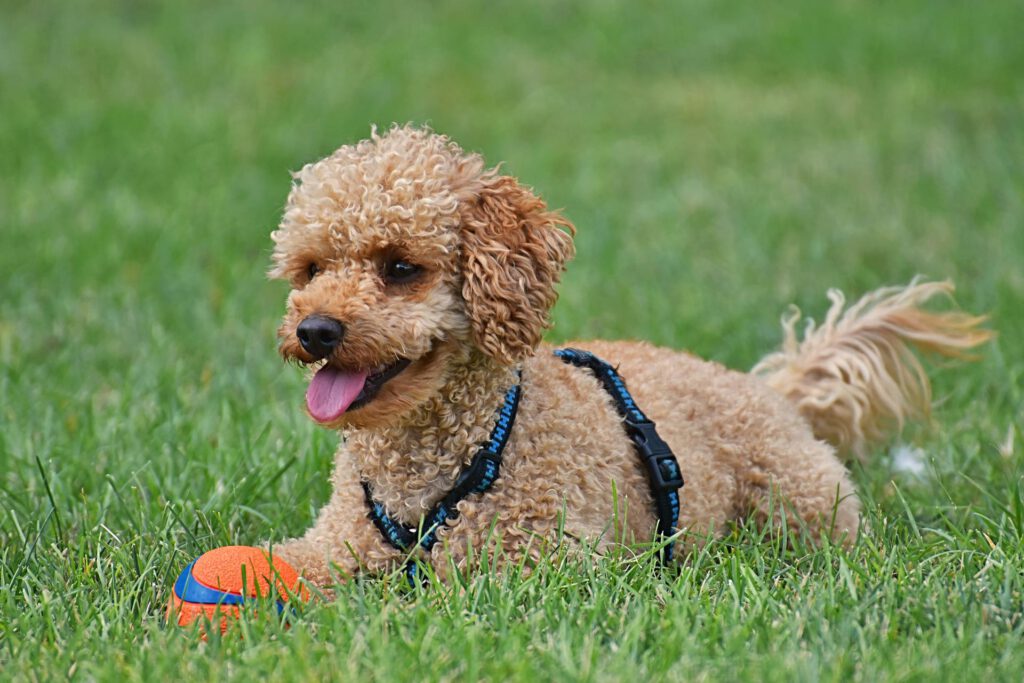
What do you think of when you hear the word “poodle”? Some people imagine a meticulously groomed dog winning first prize at a show. Others think of the curly-coated pup that snuggles with them on the couch.
Poodles come in many sizes and have been used for hunting, companionship and comfort for hundreds of years. They are intelligent, active, vigilant, and great for people with allergies.
In this article, we’ll discuss all of the important features of poodles and determine why they are one of the most popular dog breeds.
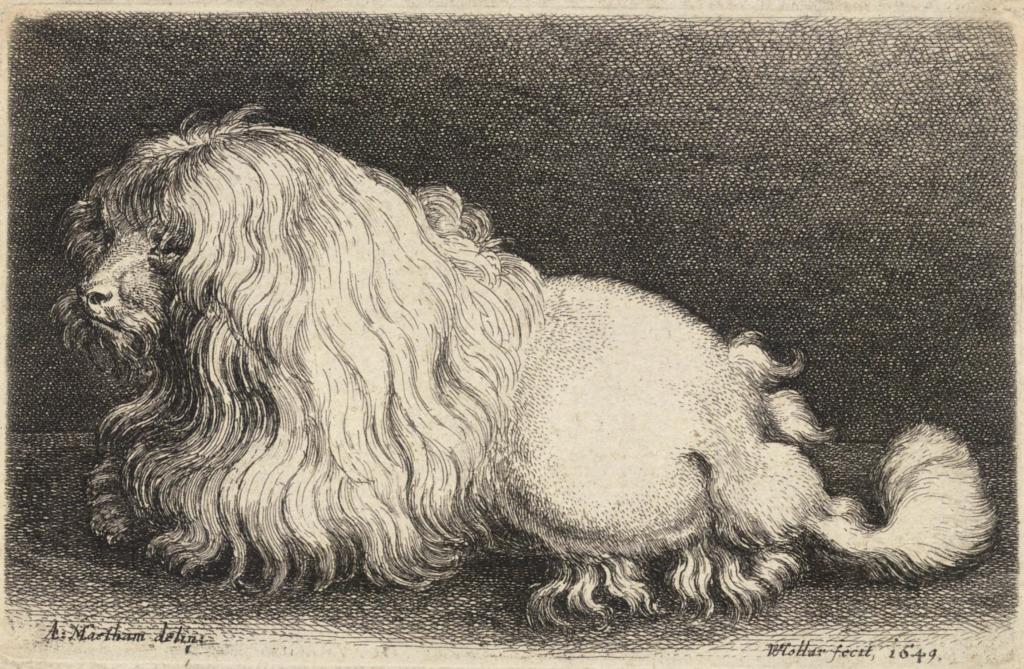
History
Poodles have been beloved pets for hundreds of years, but their origins are hotly debated among cynologists. Most believe that these curly-haired pups were originally bred in Germany. In fact, the word “poodle” is derived from “puddeln”, which is an old German word that means “to splash”.
Others think that poodles originated in France and that they descend directly from the Barbet breed. French poodles are called “caniche”, which translates to “duck dog”.
Regardless of their origin, almost everyone agrees that poodles were bred as water dogs. Like other breeds such as the Barbet and English Water Spaniel, the poodle’s main job was to tag along on hunting trips and fetch shot game from the water. They could also retrieve ammunition such as bolts and arrows that missed the target.
Over time, poodles became more useful for companionship than for hunting. The Poodle Club of America was established in 1931 to promote breeding and training standards. The breed became even more famous after World War II, particularly in North America. In fact, the poodle was the most popular breed in the U.S. from 1960 to 1979 and remains in high demand to this day.
Coat
The tightly-curled single coat has always been a defining characteristic of poodles. Let’s look at some key features of the poodle’s coat.
Color
Poodles come in an absolutely staggering array of colors, including white, cream, café au lait, beige, blue, brown, black, silver, and red. If you have a favorite color, chances are good that you’ll find a poodle to match it!
Some poodles have a single-colored coat but others come in striking patterns. There are “parti” poodles with two distinct colors, brindle (striped), sable (ombré), and abstract, where the coat features small dashes of color. There is even a pattern called “phantom” where contrasting color appears in specific areas such as the legs, chest, and beneath the tail.
Styling
Have you ever wondered why poodles have such strange haircuts? Believe it or not, these traditional clips originally had a practical purpose.
Poodles’ hindquarters were shaved so that they could swim and fetch game in the water with less resistance. Plenty of hair was left on the chest to help counteract hypothermia. Some hair was also left on the joints to help prevent cold and injury.
Today you will find many styles of coat clips among poodles. Two of the most common are the Continental and the English Saddle. The major difference between these clips is the shaving of the backside, which is a feature of the Continental clip. Many prestigious dog shows require either the Continental or English Saddle clip for poodles.
Allergy Concerns
We have great news for dog lovers who suffer from allergies: poodles are mostly hypoallergenic! Some breeds will leave your furniture and clothing covered in a thick layer of hair, but poodles are famous for shedding very little. Less shedding means less dander in the air.
However, you’ll notice that we said “mostly” hypoallergenic. Dogs can also trigger allergic reactions through their saliva and urine. Luckily, poodles are not heavy droolers! If your pup is housebroken and well-groomed, this breed is still one of the best options for allergy-suffering dog lovers everywhere.
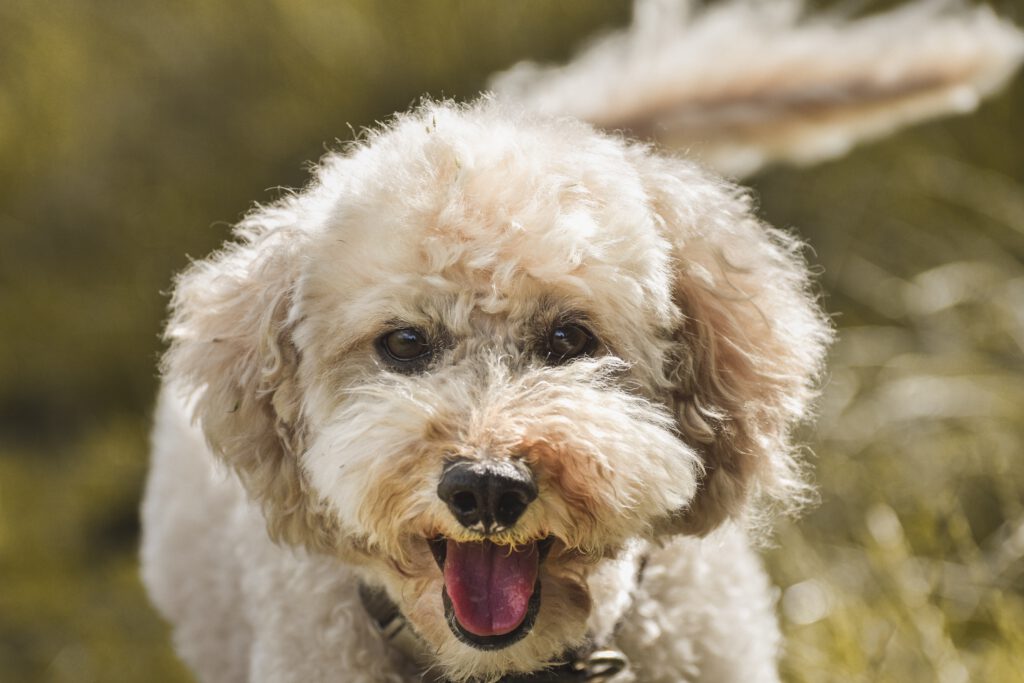
Types of Poodle
Over time, poodle breeders have realized that one size does not necessarily fit all. Each dog owner has a unique preference for the height and weight of their perfect pup.
As a result, poodles are now offered in many different sizes: royal standard, standard, moyen, miniature, toy, and teacup. The following table shows how big each poodle type will grow.
| Height | Weight | |
| Royal Standard | 24 inches or more | 60 to 70 pounds or more |
| Standard | 18 to 24 inches | 44 to 70 pounds |
| Moyen | 14 to 18 inches | 33 to 42 pounds |
| Miniature | 11 to 14 inches | 26 to 31 pounds |
| Toy | 9 to 11 inches | 14 to 17 pounds |
| Teacup | 6 to 9 inches | Less than 10 pounds |
Poodle Crossbreeds
Although they are not considered a “type” of poodle, crossbreeds have become very popular among dog owners in the last few decades. These include the Goldendoodle, Bernedoodle, Labradoodle, Jackapoo, Yorkie-poo, and many other variants.
These mixed breeds are known for their resilient health and unique appearance. However, not all crossbreeds are as hypoallergenic as purebred poodles. And some organizations such as the Poodle Club of America worry that these “designer dogs” present a threat to poodle breeding standards.
Poodle Personality
It’s difficult to generalize about the personality of any dog breed, but there are some traits that poodles tend to share. Here are some important features of the poodle’s personality.
Intelligent and Independent
The poodle’s high intelligence may be due to its history as a water dog when its human companions had high expectations for physical and mental abilities. Many owners report that intelligent dogs are easier to train, so the poodle could be a great dog for first-time owners with limited training experience.
Poodles are also known for their relative independence. The poodle will always appreciate attention, but unlike some other needy breeds, this dog can be left on its own for a reasonable amount of time without suffering from anxiety.
Sweet and Sociable
Have you ever noticed “that dog” at the park? The one who won’t stop barking and snapping at every living creature? Poodles are not usually like that!
This breed is known for being fairly sociable with strangers outside of its immediate pack. And unlike some hunting breeds such as beagles, well-trained poodles are less inclined to chase small animals.
However, poodles can also make great guard dogs. They don’t have an intimidating appearance, of course, but they are usually vigilant and will bark if they sense any threat to their owner.
Great For Families
There’s a reason that poodles have become so immensely popular over the past century: they are great family dogs! This breed has never been known for aggression toward small children, especially when they are trained and socialized. Whether you choose a purebred or mixed breed, you can bet that a poodle will fit in nicely with your family.
If you have babies or very young children, however, you might consider adopting a larger poodle variety such as the standard or moyen. The smaller poodles such as toy and teacup are more vulnerable to injury. This can be a problem with children who have not yet learned to be gentle with animals.
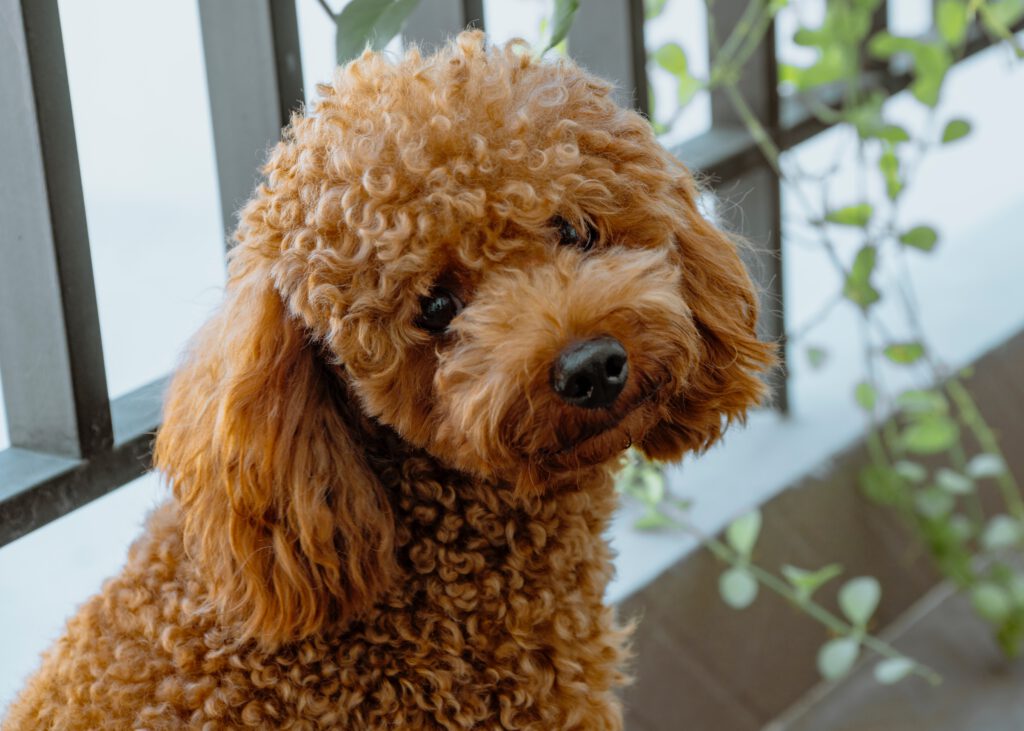
Taking Care of a Poodle
If you’re thinking of adopting a poodle, you should first consider what it will need from you. Many dog owners feel that their pup is well worth the time and money but owning a dog does require some effort. Here are the main things to consider when caring for a poodle.
Exercise
Poodles are so famous for their companionship and fancy haircuts that it’s easy to forget about their physical abilities. These dogs were literally bred to run, swim and fetch! Even the laziest poodle will need a good amount of exploration and play time.
A regular training regiment is also a great way to get exercise. You can buy a collar or harness for your poodle and take them on walks to teach proper leash behavior.
When planning a routine for your poodle, don’t forget to leave space between exercise and meal time to avoid potentially dangerous digestive issues. And as always, your dog will need plenty of water to stay hydrated.
Feeding
This breed does not have a reputation as a voracious eater. In some ways, this is accurate; poodles are small-to-medium-sized dogs that lack the energy requirements of working dogs such as German Shepherds.
However, your poodle will depend on you for high-quality food that contains optimum levels of protein, fat, carbohydrates, vitamins, and other nutrients. Whether you choose kibble, wet food, or a homemade recipe, your poodle’s health depends on a well-balanced diet.
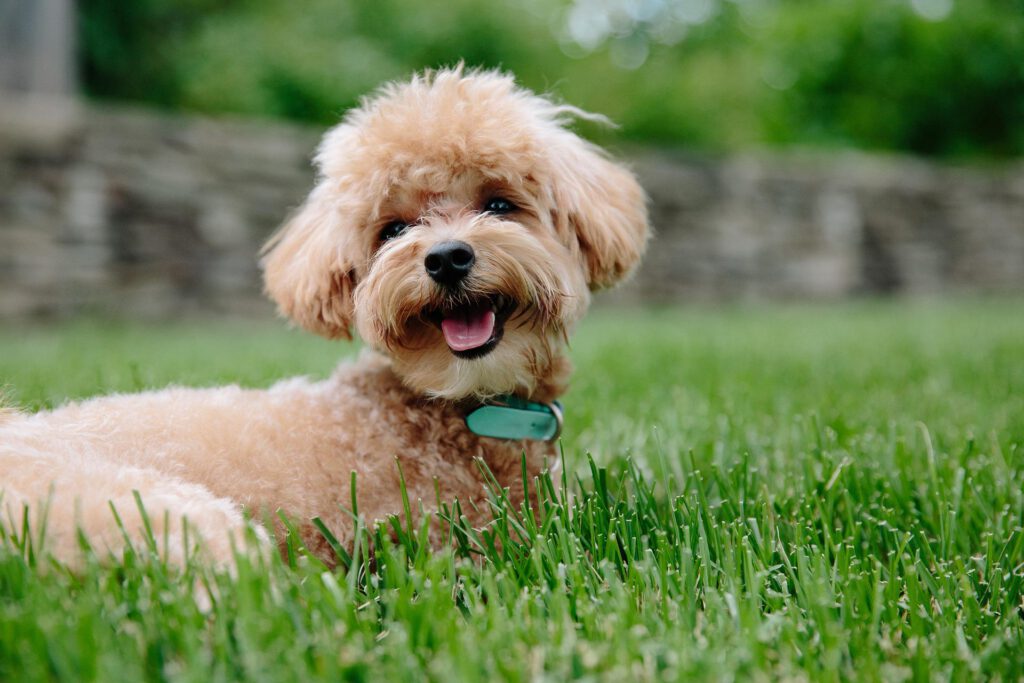
Health
When you adopt a poodle, you should expect to receive a guarantee that the it has no health defects and has been given any immunizations. You should also schedule an appointment with a reputable veterinarian shortly after the adoption to ensure that your pup is up to date with vaccines and preventative medication.
There are no health problems that are unique to this breed. However, perhaps due to inbreeding, poodles are especially susceptible to some medical issues.
One of these is Sebaceous Adenitis (SA), a genetic condition where the sebaceous glands become inflamed. Often mistaken for skin allergies, SA causes dry skin and hair loss.
Many poodles also suffer from Addison’s Disease, a condition where the dog’s adrenal glands do not produce enough hormones. Dogs with this disease often suffer from vomiting and become lethargic. They may also lose interest in eating. Addison’s Disease can be fatal when it affects the heart, so talk to your veterinarian immediately if you notice these symptoms.
Grooming
Many people claim that poodles never shed, but this is only partially true. They do shed, but most of the dead hair remains trapped in the coat’s tight curls.
This means that your clothing and furniture will remain clean, which is great news for most dog owners! On the other hand, it also means that you should regularly brush your poodle’s coat to prevent matting. Brushing will also remove the tangles in their curly hair.
If your poodle’s coat is white or some other light color, you may notice discoloration in the hair around their eyes. These “tear stains” are caused by the iron in your pup’s tears. Tear stains are a cosmetic issue that can be prevented and removed by over-the-counter shampoos and supplements.
Tartar may build up on your poodle’s teeth over time, so try to brush them a few times each week. This will prevent gum disease and freshen your pup’s bresh. Some owners also use dental chews for this purpose. These chews often have minty flavors, and the act of chewing helps clean dogs’ teeth naturally.
Finally, your poodle should have his nails trimmed regularly if they nails are not worn down naturally through daily activity. You can either hire a professional groomer or invest in a high-quality nail trimmer. Long nails can become stuck in some surfaces and cause injury to your dog.
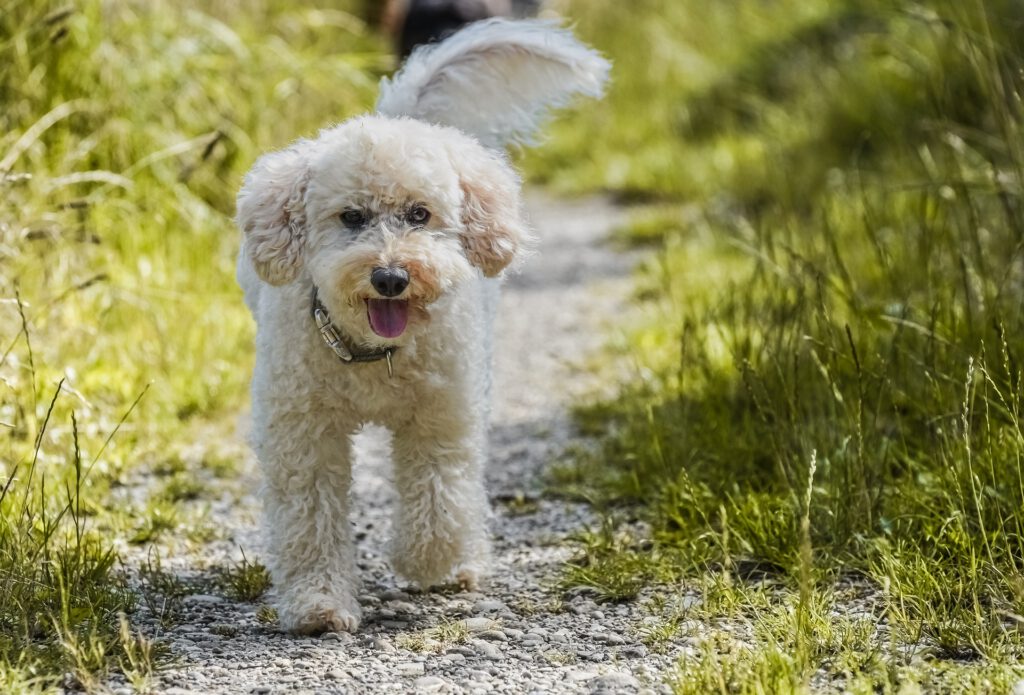
FAQ
How much do poodles cost?
You can expect to pay between $500 and $2000 for a standard poodle. The actual price depends on size and breeding. As you may expect, an established reputable poodle breeder will charge a premium for their services. And you’ll pay more for niche varieties such as the toy and teacup poodles because it’s more difficult to breed them.
Do poodles like water?
Yes, poodles enjoy swimming and splashing in water. Poodles were bred for fetching shot game from streams, rivers and lakes, so you might say that a love of water is in their genes! However, poodles can also become accustomed to a sedentary indoor lifestyle, so be gentle when you introduce them to water for the first time.
Do poodles bark a lot?
Poodles bark a moderate amount. They are less “yappy” than some smaller breeds, and they typically don’t howl like beagles. But poodles will certainly bark if they sense a threat in their environment, which makes them great guard dogs.
Conclusion
The poodle is a noble, elegant dog breed with a rich legacy. Humans have used poodles as hunting assistants and companions for hundreds of years, and they remain very popular even today. So if you are looking for a small or medium-sized dog to adopt, consider the poodle!